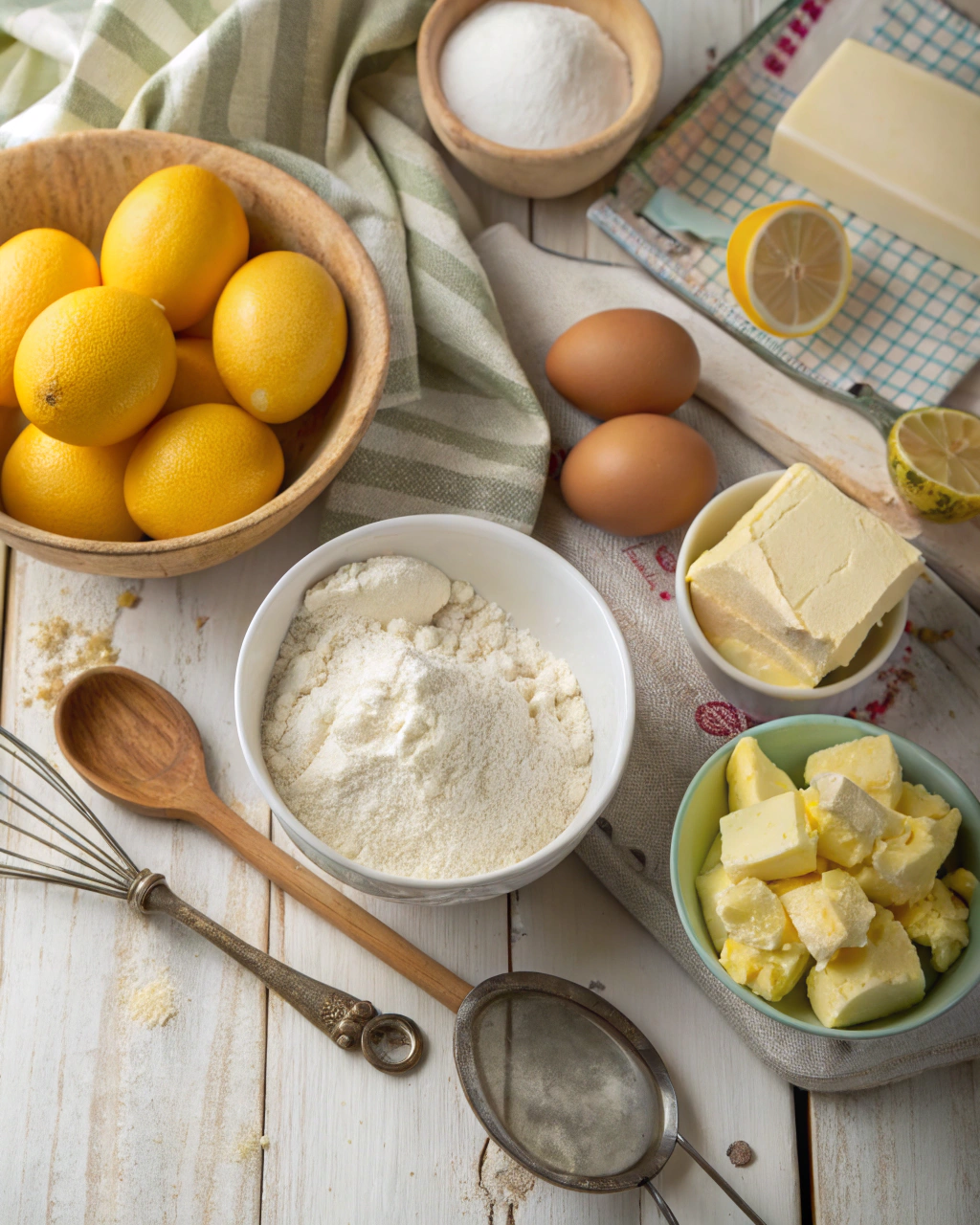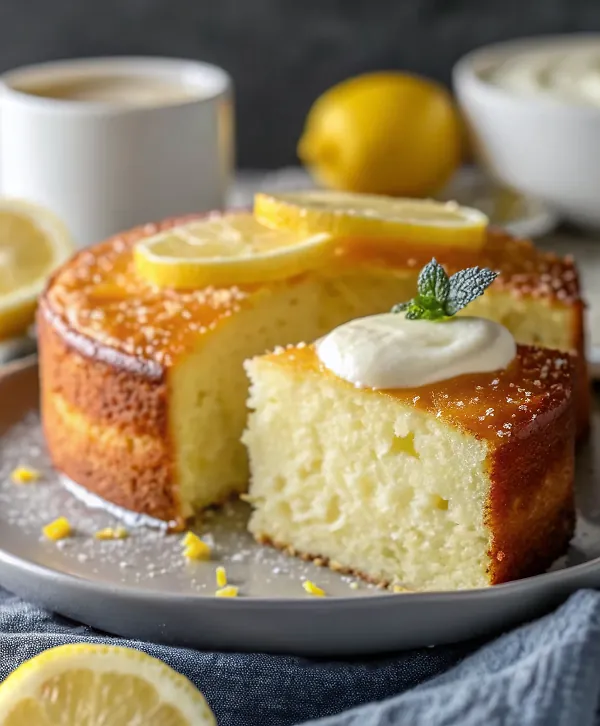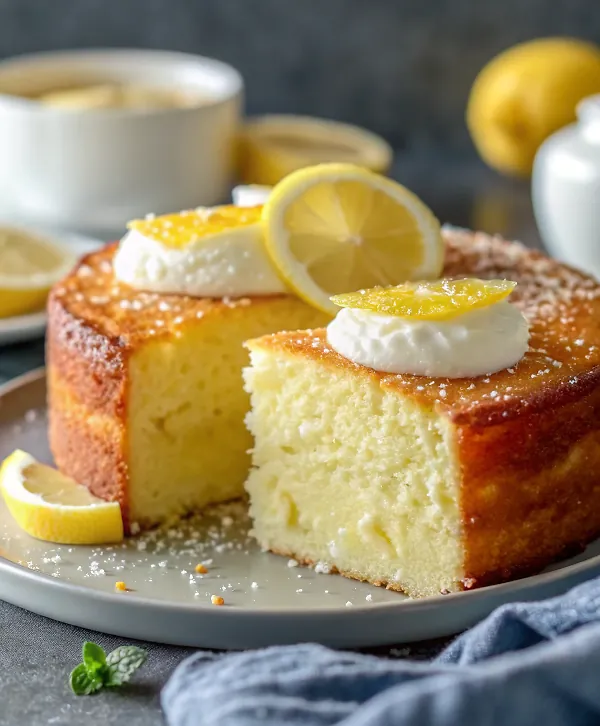Did you know that lemons contain over 50% of their nutritional value in the peel alone? Yet most bakers discard this golden treasure when making desserts. This Lemon Layer Cake with Lemon Cream Cheese Buttercream celebrates every part of the lemon, from zest to juice, creating a dessert that’s both intensely citrusy and perfectly balanced.
If you’ve been searching for a show-stopping cake that delivers restaurant-quality results at home, you’ve found it. This three-layer masterpiece combines a tender, moist cake base with a tangy cream cheese buttercream that will have your guests asking for the recipe. Whether you’re celebrating a special occasion or simply craving something extraordinary, this Lemon Layer Cake with Lemon Cream Cheese Buttercream delivers every time.
Why This Lemon Layer Cake with Lemon Cream Cheese Buttercream Matters
In a world of artificial flavors and shortcuts, this recipe stands apart by using real lemons and traditional techniques. The combination of fresh lemon zest and juice creates layers of citrus flavor that artificial extracts simply can’t match. The cream cheese buttercream strikes the perfect balance between sweet and tangy, complementing rather than overpowering the delicate cake layers. This isn’t just another dessert recipe – it’s a celebration of authentic flavors and time-tested baking methods that create memories worth savoring.
External Resources
Before diving into this incredible recipe, explore our collection of complementary desserts like our Limoncello Mascarpone Cake and Lemon Mousse Cake Recipe for more citrus inspiration. For additional insights into maximizing lemon flavor, check out 9 Benefits and Uses of Lemon Peel and perfect your frosting technique with The Best Cream Cheese Frosting Recipe.
Ingredients
Lemon Layer Cake with Lemon Cream Cheese Buttercream Ingredients

For the Cake Layers:
|
For the Cream Cheese Buttercream:
|
Ingredient Spotlight
Fresh Lemon Zest: The oils in lemon zest provide intense citrus flavor without adding moisture that could affect cake structure. Always zest before juicing for maximum yield.
Room Temperature Ingredients: Butter, eggs, and milk at room temperature create better emulsion, resulting in a more tender, evenly textured cake.
Brick Cream Cheese: Full-fat brick cream cheese provides stability and richness that tub varieties cannot match. The firmer texture prevents the frosting from becoming too soft.
Sifted Flour: Sifting removes lumps and aerates the flour, contributing to the cake’s light, delicate crumb.
Timing
|
Instructions
|
Making the Cream Cheese Buttercream:
|
Assembly and Decoration:
|
Tips & Tricks for Perfect Lemon Layer Cake with Lemon Cream Cheese Buttercream
|
Recipe Variations & Substitutions
Lemon-Blueberry Variation: Fold 1 cup fresh blueberries tossed in flour into the batter for bursts of fruity sweetness that complement the lemon beautifully.
Gluten-Free Option: Substitute the all-purpose flour with a 1:1 gluten-free flour blend. Add 1 teaspoon xanthan gum if your blend doesn’t include it.
Reduced Sugar Version: Replace half the granulated sugar with unsweetened applesauce and reduce the powdered sugar in frosting by 1 cup, adding more lemon juice for flavor.
Mini Cake Version: Divide batter among 24 cupcake liners and bake for 18-20 minutes. Perfect for parties and portion control.
Behind the Recipe
This Lemon Layer Cake with Lemon Cream Cheese Buttercream was born from a desire to capture the essence of summer in dessert form. The inspiration came from watching my grandmother carefully zest lemons for her famous lemon meringue pie, never wasting a single drop of that precious citrus oil. She taught me that real lemon flavor comes from respecting the whole fruit – the bright acidity of the juice balanced by the floral oils in the zest.
The addition of cream cheese to traditional buttercream was a happy accident that occurred during a particularly warm summer day when regular buttercream kept melting. The tangy cream cheese not only stabilized the frosting but added a sophisticated depth that perfectly complemented the bright lemon cake. This recipe represents the beautiful marriage of traditional techniques with practical innovation.
Pairing Ideas
Beverages: Serve with freshly brewed Earl Grey tea, sparkling lemonade, or Italian sodas. The bergamot in Earl Grey particularly complements the lemon flavors.
Complementary Desserts: Pair with fresh berries, lemon curd, or a simple fruit salad. Vanilla ice cream makes an excellent accompaniment for special occasions.
Seasonal Pairings: In spring, serve with fresh strawberries and mint. Summer calls for blueberries and peaches. Fall pairs beautifully with poached pears, while winter benefits from crystallized ginger garnish.
Leftover & Reuse Ideas
Cake Crumbs: Save any trimmed cake pieces to make cake pops, trifle layers, or ice cream mix-ins. The lemon flavor intensifies beautifully in these applications.
Extra Frosting: Leftover cream cheese buttercream keeps for a week refrigerated and makes an excellent fruit dip or cookie filling. It also freezes beautifully for up to three months.
Day-Old Cake: Transform slightly stale cake into bread pudding or French toast for a decadent breakfast treat. The lemon flavor actually improves with this treatment.
Nutritional Information
Each generous slice of this Lemon Layer Cake with Lemon Cream Cheese Buttercream (serving 12) contains approximately 520 calories, 18g fat, 85g carbohydrates, 6g protein, and 2g fiber. The cake provides vitamin C from fresh lemon juice and zest, along with calcium from the milk and cream cheese components.
The natural sugars from fresh lemon juice provide quick energy, while the butter and cream cheese contribute essential fatty acids. This dessert is best enjoyed as part of a balanced diet and special occasion dining.
Serving Suggestions
Elegant Presentation: Garnish each slice with a twist of fresh lemon zest, a few fresh berries, or a sprig of mint. A light dusting of powdered sugar adds restaurant-quality appeal.
Casual Gatherings: Cut into generous squares and serve on colorful plates with fresh fruit on the side. The cake’s vibrant flavor stands beautifully on its own.
Special Occasions: Create a stunning centerpiece by decorating with candied lemon slices, fresh flowers, or piped rosettes of extra buttercream around the base.
Common Mistakes to Avoid
Overmixing the Batter: Once flour is added, mix just until combined. Overmixing develops gluten, resulting in tough, dense cake layers instead of the desired tender crumb.
Using Cold Ingredients: Room temperature ingredients emulsify properly, creating smooth batter. Cold ingredients can cause curdling and uneven texture in the final cake.
Skipping the Sifting: Sifted flour prevents lumps and creates lighter texture. This extra step makes a noticeable difference in the final product’s quality.
Rushing the Cooling: Attempting to frost warm cake layers will melt the buttercream and create a messy disaster. Patience during cooling ensures professional results.
Uneven Frosting Distribution: Measure frosting between layers to ensure even coverage and prevent lopsided appearance. Save enough frosting for a generous final coating.
Storage & Reheating Tips
Short-term Storage: Cover finished cake with cake dome or loose foil and refrigerate for up to 5 days. Bring to room temperature 30 minutes before serving for best flavor and texture.
Freezing Instructions: Wrap unfrosted cake layers individually in plastic wrap, then foil. Freeze up to 3 months. Thaw overnight in refrigerator before frosting and assembly.
Make-Ahead Strategy: Bake cake layers up to 2 days ahead and store covered at room temperature. Prepare frosting day of assembly for optimal texture and flavor.
Leftover Revival: If cake becomes dry, brush layers lightly with simple syrup made from equal parts water and sugar before serving.
- Can I make Lemon Layer Cake with Lemon Cream Cheese Buttercream ahead of time?
- Yes! Bake cake layers up to 2 days ahead and store covered at room temperature. The assembled cake can be made 1 day ahead and refrigerated. Bring to room temperature before serving for best texture.
- Is Lemon Layer Cake with Lemon Cream Cheese Buttercream suitable for special diets?
- This recipe contains gluten, dairy, and eggs. However, it can be adapted using gluten-free flour blends, dairy-free butter substitutes, and egg replacers for various dietary needs while maintaining delicious results.
- How do I prevent my Lemon Layer Cake with Lemon Cream Cheese Buttercream from being too tart?
- Balance is key! Start with the recommended lemon juice amounts and taste the batter and frosting before adding more. The sweetness from sugar and richness from butter and cream cheese naturally balance the acidity.
- Can I use bottled lemon juice for Lemon Layer Cake with Lemon Cream Cheese Buttercream?
- Fresh lemon juice is strongly recommended for optimal flavor. Bottled juice lacks the bright, complex flavors of fresh lemons and may contain preservatives that affect taste and texture.
- Why is my Lemon Layer Cake with Lemon Cream Cheese Buttercream dense instead of light?
- Dense texture usually results from overmixing the batter, using cold ingredients, or incorrect measurements. Ensure all ingredients are at room temperature and mix just until combined for the lightest results.
Frequently Asked Questions
Conclusion
Lemon Layer Cake with Lemon Cream Cheese Buttercream

This Lemon Layer Cake with Lemon Cream Cheese Buttercream represents the perfect harmony of bright citrus flavors, tender cake texture, and luxurious frosting. From the carefully balanced ingredients to the detailed assembly techniques, every element works together to create a dessert worthy of your most important celebrations.
The combination of fresh lemon zest and juice delivers authentic citrus flavor that artificial extracts simply cannot match, while the cream cheese buttercream provides the ideal creamy, tangy complement to the tender cake layers. Whether you’re a seasoned baker or trying layer cakes for the first time, this recipe’s clear instructions and professional tips ensure success every time.
Made these Lemon Layer Cake with Lemon Cream Cheese Buttercream? Drop your twist in the comments, rate the recipe, and tag us on facebook, instagram with #erinrecipes — we might feature your creation!

Ultimate Lemon Layer Cake with Lemon Cream Cheese Buttercream
Ingredients
Instructions
- Prepare baking pans: Preheat oven to 350°F (177°C). Grease three 8-inch cake pans, line with parchment paper rounds, then grease the parchment paper.
- Mix dry ingredients: Whisk the flour, baking powder, baking soda, and salt together. Set aside.
- Make batter: Using a handheld or stand mixer fitted with a paddle or whisk attachment, beat the butter and sugar together on high speed until smooth and creamy, about 3 minutes. Scrape down the sides and up the bottom of the bowl with a rubber spatula as needed. Beat in the eggs and vanilla extract on high speed until combined, about 2 minutes. Scrape down the sides and up the bottom of the bowl as needed. With the mixer on low speed, add the dry ingredients just until combined. With the mixer still running on low, add the milk, lemon zest, and lemon juice and mix just until combined. You may need to whisk it all by hand to make sure there are no lumps at the bottom of the bowl. The batter will be a little thick.
- Bake cakes: Divide the batter evenly between the prepared cake pans. Bake for around 21–26 minutes or until the cakes are baked through. To test for doneness, insert a toothpick into the center of the cake. If it comes out clean, it’s done. Allow cakes to cool completely in the pans set on a wire rack. The cakes must be completely cool before frosting and assembling.
- Prepare frosting: In a large bowl using a hand-held mixer or stand mixer fitted with a whisk or paddle attachment, beat the butter on medium speed until creamy, about 2 minutes. Add the cream cheese and beat until completely smooth and combined. Add confectioners’ sugar, lemon juice, and vanilla extract with the mixer running on low. Increase to high speed and beat for 3 minutes. Add more confectioners’ sugar if frosting is too thin, more lemon juice if frosting is too thick, or add a pinch of salt if frosting is too sweet.
- Assemble cake: Using a large serrated knife, slice a thin layer off the tops of the cakes to create a flat surface. Discard (or crumble over ice cream!). Place 1 cake layer on your cake stand, cake turntable, or serving plate. Evenly cover the top with about 1 cup of frosting. Top with 2nd cake layer and evenly cover the top with about 1 cup of frosting. Top with the third cake layer. Spread the remaining frosting all over the top and sides. I like to top mine with homemade whipped cream.
- Chill before serving: Refrigerate for at least 30–45 minutes before slicing. This helps the cake hold its shape when cutting.
- Storage instructions: Cover leftover cake tightly and store in the refrigerator for 5 days.
